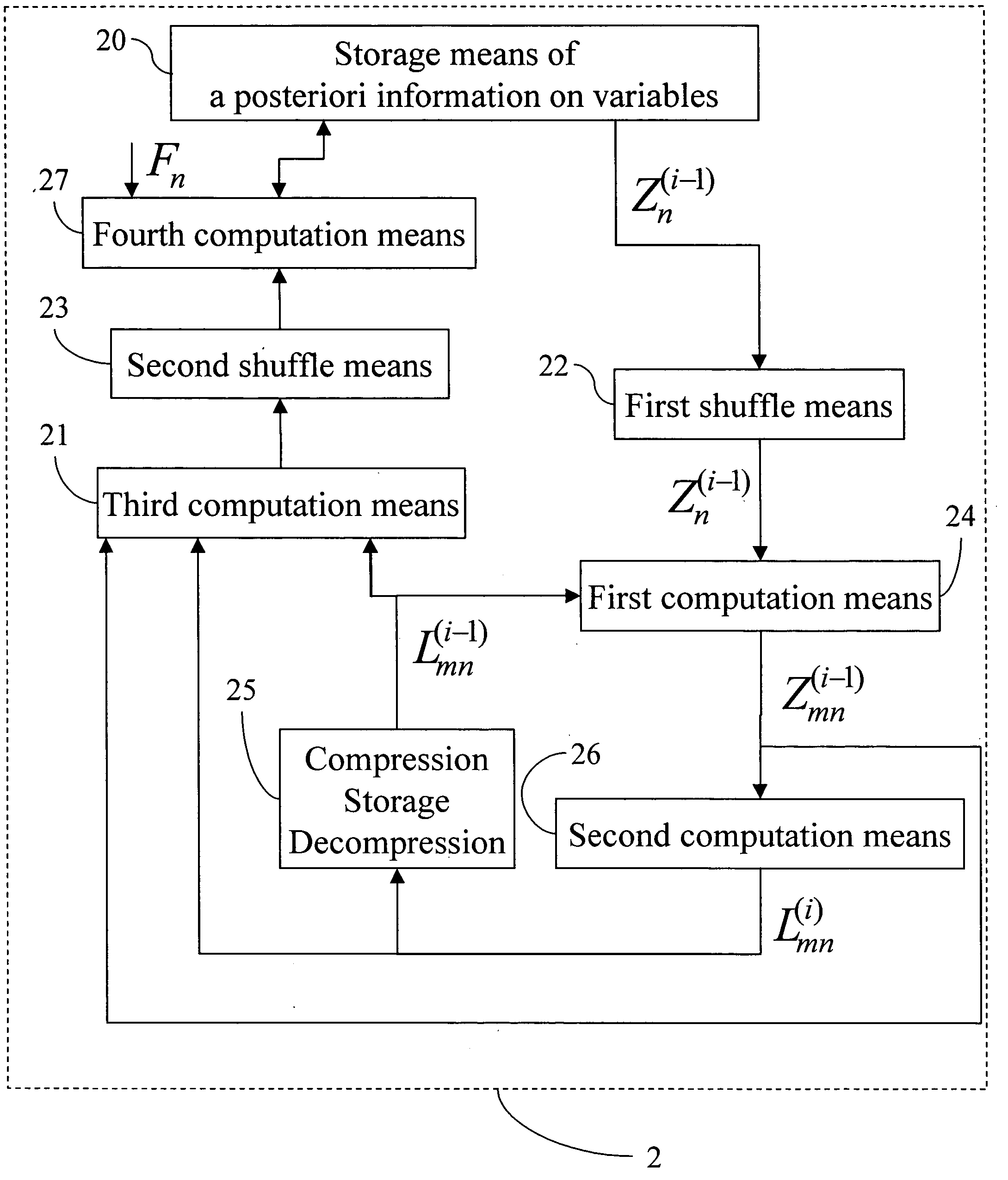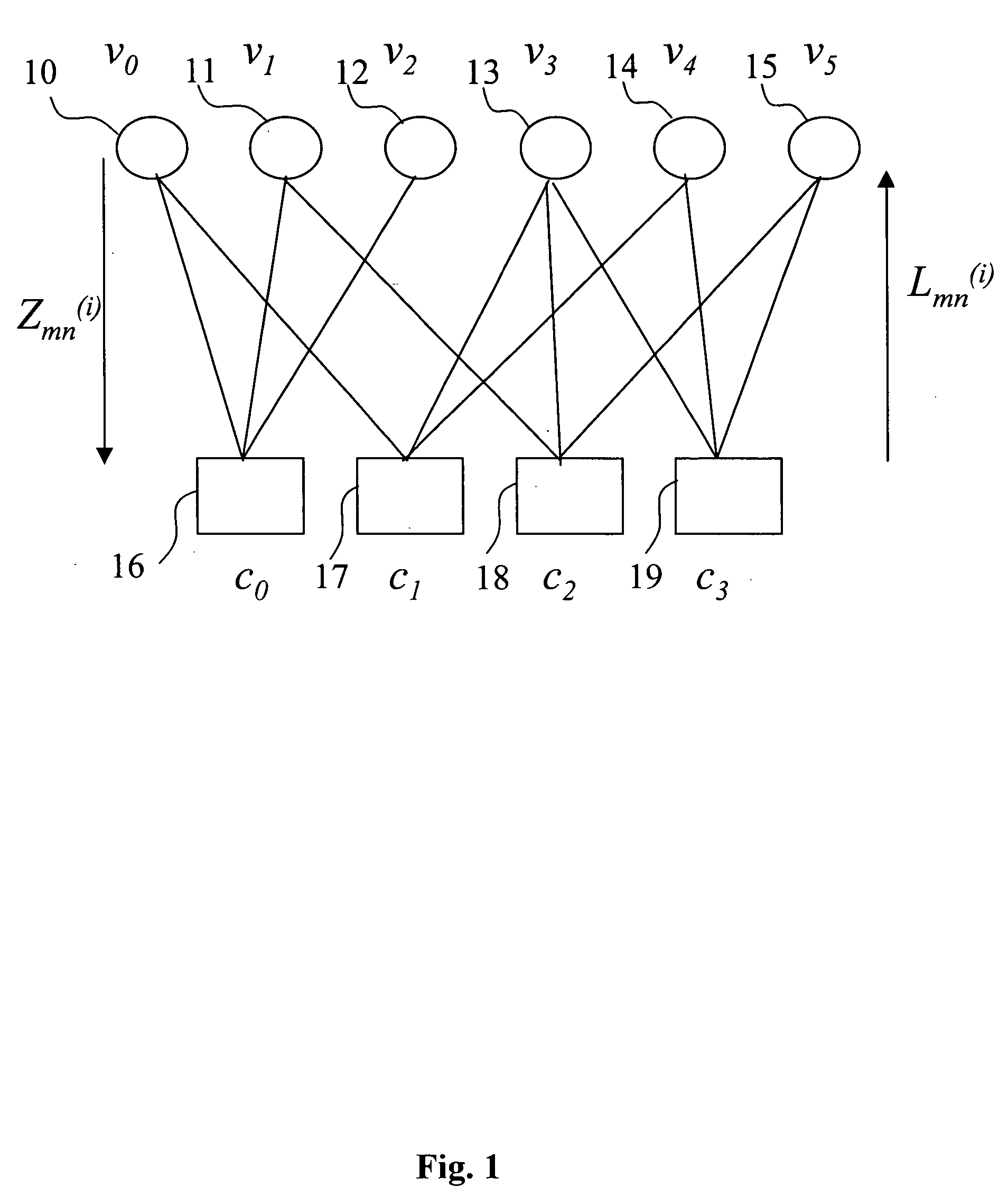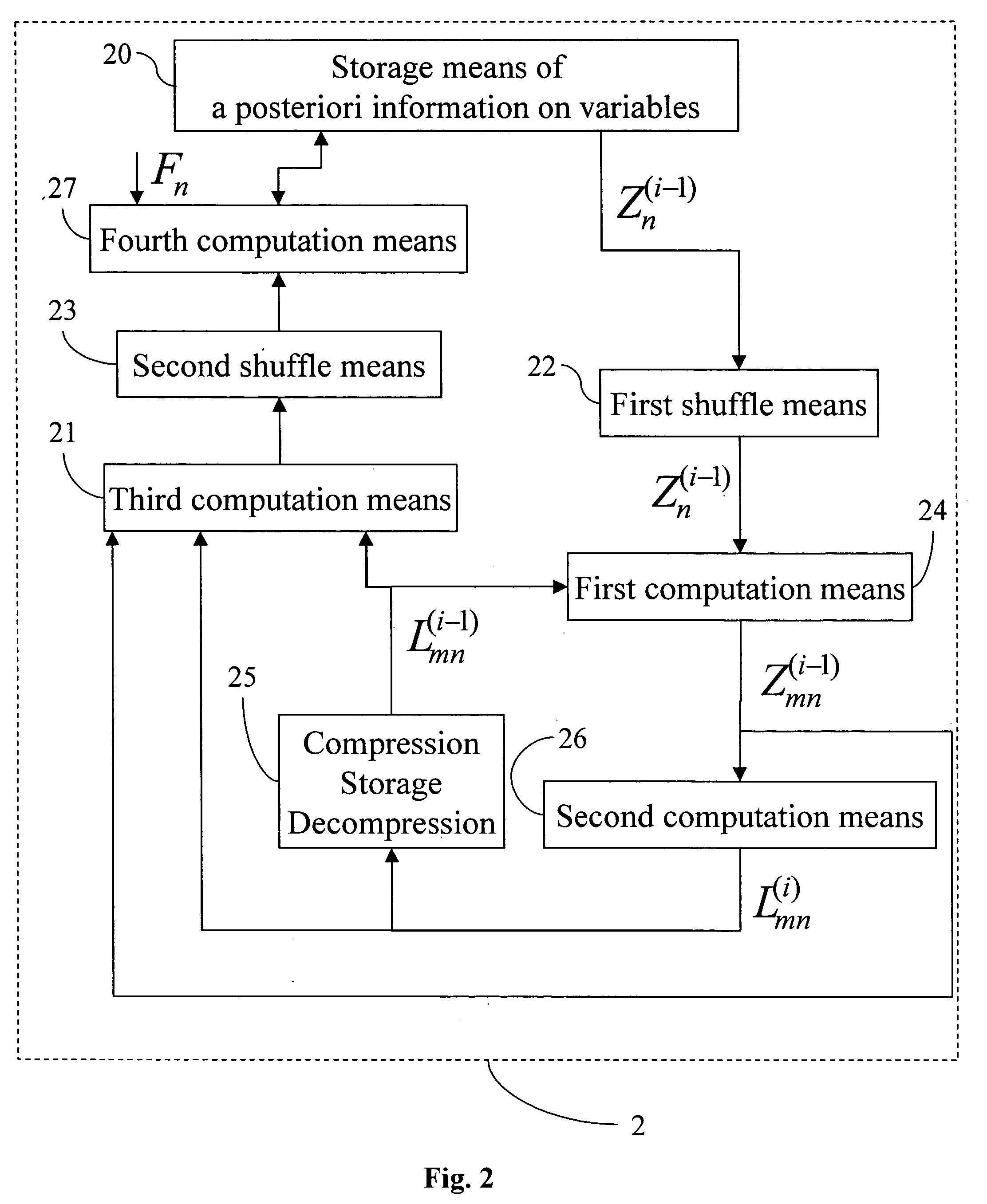LDPC decoder, corresponding method, system and computer program
a decoder and corresponding method technology, applied in the field of communication, can solve the problems of affecting performance, affecting the performance, and affecting the number of iterations, so as to reduce the number of decoding iterations, reduce the computational complexity of the constraint node processor, and reduce the storage requirements
- Summary
- Abstract
- Description
- Claims
- Application Information
AI Technical Summary
Benefits of technology
Problems solved by technology
Method used
Image
Examples
Embodiment Construction
[0137] The general principle of the invention is illuminated by the following modified belief-propagation algorithm, declined in its flooding scheduling version (A) and in its horizontal-shuffled scheduling (B). Those new scheduling allow to perform compression of constraint to variable messages.
[0138] The novel scheduling proposed, called “horizontal-shuffled”, exhibits faster convergence than classical flooding schedule algorithm, and does not suffer from the need to store the intermediate values of Zhang, I. and Fossorier, M. P. C. “Shuffled belief propagation decoding” (Conference Record of the Thirty-Sixth Asilomar Conference on Signals, Systems and Computer, 2002).
A / Modified-BP Algorithm Using a Flooding Scheduling:
[0139] Initialization: A-priori information is initialized: Zn(0)−Fn and set all the Lmn(0) to zero.
[0140] Iteration i (i=1 to imax):
[0141] 1 / Horizontal step: for each constraint cm (m=1 to M) do {[0142] sub-step 1—Decompress the compressed constraint to vari...
PUM
 Login to View More
Login to View More Abstract
Description
Claims
Application Information
 Login to View More
Login to View More - R&D
- Intellectual Property
- Life Sciences
- Materials
- Tech Scout
- Unparalleled Data Quality
- Higher Quality Content
- 60% Fewer Hallucinations
Browse by: Latest US Patents, China's latest patents, Technical Efficacy Thesaurus, Application Domain, Technology Topic, Popular Technical Reports.
© 2025 PatSnap. All rights reserved.Legal|Privacy policy|Modern Slavery Act Transparency Statement|Sitemap|About US| Contact US: help@patsnap.com



